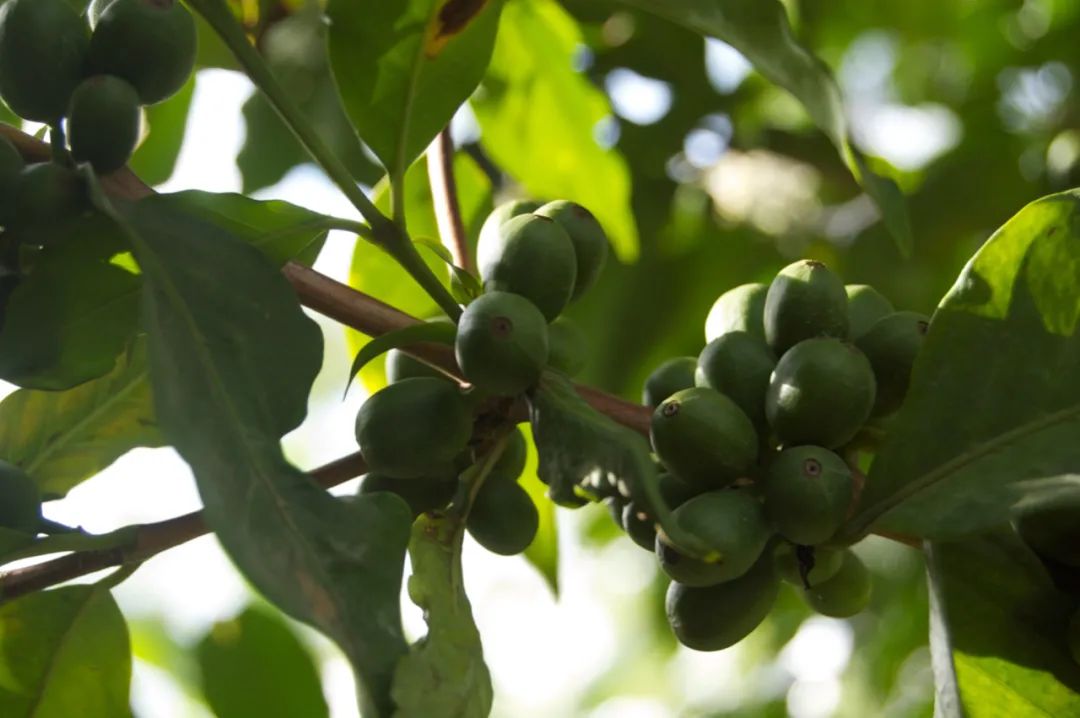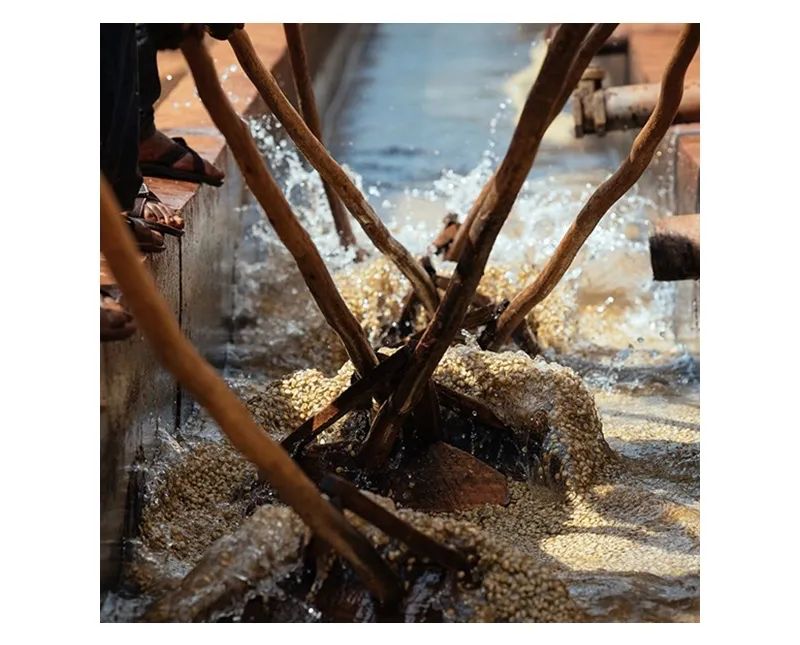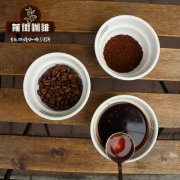How does the acidity of hand-brewed coffee determine the factors that affect the acidity of coffee?

Professional coffee knowledge exchange more coffee bean information please follow the coffee workshop (Wechat official account cafe_style)
Guide reading
The development of boutique coffee has made more people have a deeper understanding of coffee. Coffee is not only bitter, but also sour and sweet, and different producing areas have different flavors. For example, the delicate flowers of Panamanian water-washed rose summer, the citrus fruits of Yega Xuefei, the herbal spices of wet planing Mantenin, and Kenyan sour raspberries.

Among them, acidity is an important part of coffee taste, whether in Sca cup meter or COE cup meter, acid is an important sub-item to judge the quality and taste performance of a cup of coffee.
But how does the acid in coffee be affected? How to adjust the acidity of hand-brewed coffee?
How does the acid in coffee be affected?
First of all, we need to understand where the acid in coffee comes from and how it is affected. Coffee is essentially a kind of plant, a kind of crop, a kind of fruit, the ripe fruit of coffee is red on the outside and tastes sour and sweet, so the coffee itself is acidity, the acid in coffee comes from citric acid, malic acid, chlorogenic acid and so on.
The acidity of coffee is one of its charm, but at the same time, the acid in coffee can also bring us a lot of information. The acid in coffee is affected by the altitude of the growing area. In the coffee world, altitude is perhaps one of the most important indicators of coffee. The higher the altitude, the better the quality of coffee beans. Qianjie Coffee is also convinced that other conditions are the same. The higher the altitude, the higher the quality of coffee beans can be found. Why? Because high altitude brings a huge temperature difference between day and night, coffee trees grow slowly in this case and have enough time to accumulate nutrients, which are the precursors needed to develop a delicate flavor. Coffee beans at high altitudes tend to have a rising delicate acidity and a mouth full of gold.

The second is the effect of coffee varieties on acidity. Take Arabica and Robusta as an example. The difference between the two is that Robusta has higher contents of caffeine and chlorogenic acid, which is a bad acid that makes people feel sour. Chlorogenic acid can be degraded into quinic acid by baking chlorogenic acid, which is a phenolic acid and is non-volatile, so it can not be smelled by smell, but its taste is bitter. It is one of the sources of the bitter taste of deep-roasted coffee. Another representative example is Kenya's SL28 and SL34, two varieties from the laboratory that adapt to Kenya's high-phosphate soil and produce high acidity first.
The planting conditions range to the variety of coffee, and the treatment we are familiar with also has an impact on the acidity of coffee. Qianjie coffee often shares that the washed coffee is more acidic and clean, while the sun-cured coffee is fuller and more complex. The wet planing rule accidentally created the low acidity and mellowness of Indonesian coffee.

Finally, the coffee beans are exported to various importing countries, and professionals in various cafes will roast and finally brew the raw coffee beans. Roasting is the last factor that determines the basic tone of coffee taste. the deeper the roast, the lower the acidity of the coffee, and vice versa. Finally, brewing can also lead to a different taste of coffee.
How to adjust the acidity of hand coffee?
In the process of brewing coffee, how we extract it also leads to different taste of coffee. First of all, we need to understand how the taste of coffee is extracted. In the whole extraction process or brewing process of coffee, the acid, sweetness and bitterness of the coffee are extracted respectively. If you try the front, middle and back section of the cooking process, you will find that the front section will be more full-bodied, the acidity will be higher, the concentration in the middle section will begin to decrease, and the sweetness is the most obvious, while the latter section is relatively light and the concentration is relatively low, and you will only taste bitterness or woody taste.

That's why it is often said that the role of the latter part of the extraction is to adjust the concentration of the whole cup of coffee, and the extraction that mainly affects the taste of coffee is mainly in the front and middle. At this level, we know that if we want to adjust the acidity of hand-brewed coffee, we can adjust the extraction in the front and middle stage. If I want to extract more acid, I can increase the extraction in the front stage, such as dividing one more stage in the front section or increasing the disturbance during water injection.

The former street coffee products, for example, 15 grams of coffee powder, extract 225 grams of coffee liquid, divided into three stages of water injection, the first stage into 30 grams of steaming, the second stage to 125 grams, the third stage into 225 grams. As just said, if you want the acidity to be more obvious, one of the ways is to split the second stage of water injection into two stages, that is, three stages of water injection into four stages of water injection. The second method is to increase the spoiler in the second stage, and to increase the extraction in the front and middle stage by increasing the spoiler.
For more boutique coffee beans, please add private Qianjie coffee on Wechat. WeChat account: kaixinguoguo0925
Important Notice :
前街咖啡 FrontStreet Coffee has moved to new addredd:
FrontStreet Coffee Address: 315,Donghua East Road,GuangZhou
Tel:020 38364473
- Prev

Boutique coffee beans | what is the reaction when coffee is roasted? why the coffee is rich in flavor
Do you know what happens when you bake coffee? What changes have taken place to turn mung beans into our favorite delicious, fragrant coffee beans? In the first part of this two-part series, we studied how the anatomical structure of coffee beans played an important role and outlined the physical changes that took place during roasting. Now, let's look at some chemical changes.
- Next

Boutique coffee beans | must miniature batches be better than bulk batches? what's the difference between them?
There are some very flexible definitions in coffee, and micro and large lots (or community lots, I like to refer to them) are different terms depending on the person you want to ask. So let's consider: what's the difference between bulk batches and micro batches? Are they equal in mass? Who is right for whom? Or is it sometimes a better choice? What is a miniature batch? From trace amounts
Related
- Detailed explanation of Jadeite planting Land in Panamanian Jadeite Manor introduction to the grading system of Jadeite competitive bidding, Red bid, Green bid and Rose Summer
- Story of Coffee planting in Brenka region of Costa Rica Stonehenge Manor anaerobic heavy honey treatment of flavor mouth
- What's on the barrel of Blue Mountain Coffee beans?
- Can American coffee also pull flowers? How to use hot American style to pull out a good-looking pattern?
- Can you make a cold extract with coffee beans? What is the right proportion for cold-extracted coffee formula?
- Indonesian PWN Gold Mandrine Coffee Origin Features Flavor How to Chong? Mandolin coffee is American.
- A brief introduction to the flavor characteristics of Brazilian yellow bourbon coffee beans
- What is the effect of different water quality on the flavor of cold-extracted coffee? What kind of water is best for brewing coffee?
- Why do you think of Rose Summer whenever you mention Panamanian coffee?
- Introduction to the characteristics of authentic blue mountain coffee bean producing areas? What is the CIB Coffee Authority in Jamaica?

